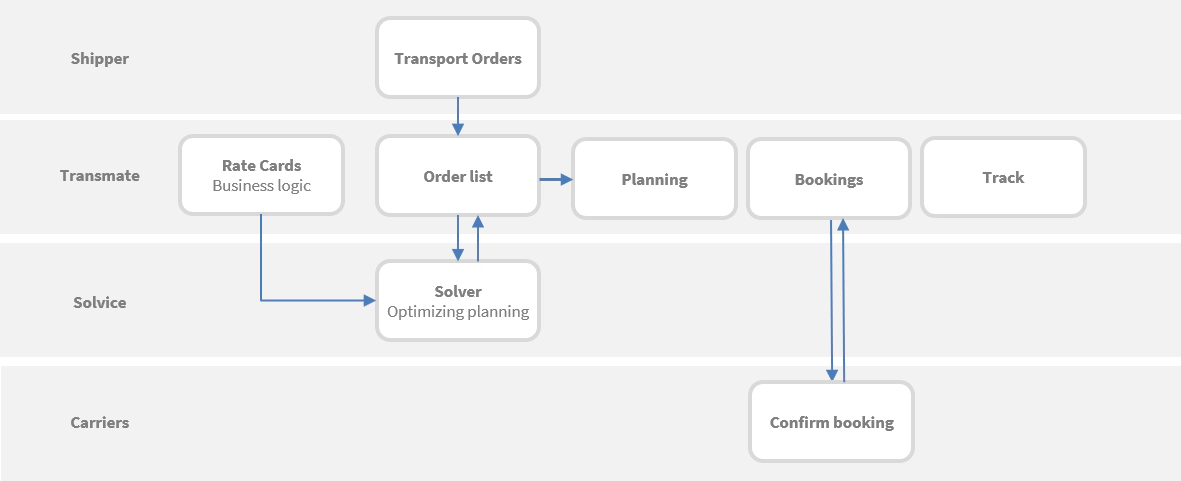No touch orders and integrated optimization
Learn how Transmate & Solvice can provide optimized transport plannings with large potential savings for your business through route optimization, automated bookings and communication tools.

A common problem in logistics and distribution is combining orders in trucks and delivering out as efficiently as possible. Often, this planning should adhere to agreed rates, agreed volumes, use an optimal routing and cope with various parameters.
When a shipper is planning its shipments, it often relies on a dedicated planning team to solve this puzzle. This results in large administrative overhead, sub-optimal allocations and high transport costs for the business. This can be heavy when there are changing requirements or exceptions that run in the operations. Many businesses see this as an inherent situation of their industry. But… there might be a smarter way to approach this problem.
Imagine collecting all orders in a single pool, running optimization algorithms, generate an optimal planning and automatically send out the booking requests to all carriers. Imagine freeing up time in your planning team giving them the tools and means to focus on the operations rather than solving a complex problem. Tools that handle the complex data issue, that provide a clean overview and allow planners to track progress and be alerted one exceptions.
Transmate and Solvice.io combine their strengths to deliver just that, combining optimization and Transport management in a single platform:

After receiving shipment orders through ERP connection or data upload in Transmate, the platform triggers the Solvice optimizer with stored rate cards and business logic. After completing the optimization run, Transmate sends out the booking requests to all allocated carriers. After carrier acceptance the shipments are booked, allocated to the partner and accrued in the system. When partners decline their allocation, the optimizer will rerun until all are booked.
Planners can track allocation progress in the Transmateplatform, adjust if needed and manually intervene for exception. Missing rates can be flagged for procurement or can be posted to your carrier pool.
The route optimization allows optimizations with time windows, load constraints and various other constraints to find balanced routes resulting in an optimal distribution over the least number of vehicles. All in all, we find that a saving of 3% in transportation cost and 20% in administrative overhead is possible. Optimization runs can be triggered on frequent basis, allowing for optimization results that move with changing demands.
